Understanding Soil Erosion: Causes and Effects
- August 23, 2024
- 0 comment
Soil erosion is a natural process where the top layer of soil is displaced, but human activities often accelerate it. This can have significant effects on agriculture, ecosystems, and the environment, as it depletes fertile soil essential for plant growth. Understanding what soil erosion is, its causes, and its impact allows us to take action. By adopting effective soil conservation techniques and strategies for the prevention of soil erosion, we can safeguard the land and ensure sustainable agricultural practices for a healthier planet.
What is Soil Erosion?
Soil erosion is the gradual displacement of the topsoil, primarily caused by natural forces like wind and water. This top layer is vital because it contains nutrients essential for plant growth, making it crucial for agriculture and ecosystems. Soil erosion can happen slowly over time or intensify during heavy rainstorms and strong winds, leading to significant environmental and agricultural challenges.
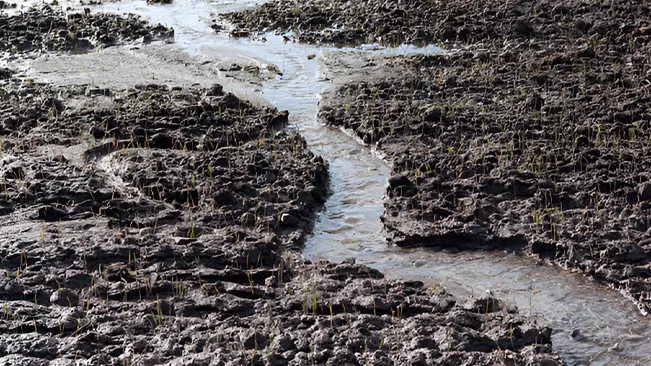
When soil erosion in agriculture occurs, it strips away fertile land, reducing crop productivity and causing sediment buildup in rivers and lakes. Human activities such as deforestation, overgrazing, and unsustainable land use worsen the problem by removing vegetation that stabilizes the soil. Without proper vegetation cover, the soil becomes highly vulnerable to erosion.
Combating soil erosion involves implementing soil conservation techniques like replanting vegetation, building terraces, and adopting sustainable land management practices. By understanding what soil erosion is and its far-reaching effects, we can take steps to protect soil and maintain its fertility for future generations.
What Causes Soil Erosion?
Soil erosion occurs when the protective topsoil is displaced by natural forces such as wind, heavy rain, or flowing water. While it is a natural process, human activities significantly amplify the problem. Deforestation, overgrazing, and poor agricultural practices are among the leading causes of soil erosion.
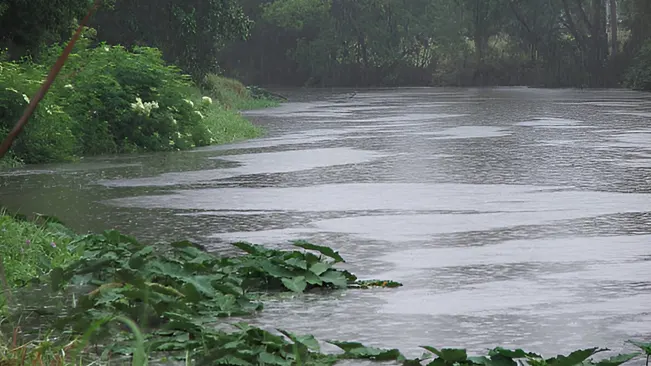
For example, plowing fields before or after crop seasons can leave the soil exposed and vulnerable for long periods. Similarly, overgrazing by livestock, such as cattle or sheep, eliminates vegetation that anchors the soil, making it more prone to being carried away. Deforestation, particularly through clearcutting, removes trees and their root systems, which otherwise stabilize the soil and prevent erosion from wind and rain.
Climate conditions also intensify the problem. Irregular rainfall, heavy storms, and fluctuating water levels contribute to soil displacement, especially in areas already impacted by human activity. Understanding these causes of soil erosion highlights the importance of sustainable practices and soil conservation techniques to mitigate the damage.
What is Water Erosion?
Water erosion occurs when rainfall or melting snow displaces soil from the land, often leading to significant environmental and agricultural impacts. The severity of this process depends on the volume and velocity of water flowing over the soil surface. Areas lacking vegetation, such as harvested farm fields, are especially vulnerable. Without plants to stabilize the soil, absorb water, or reduce the impact of raindrops, these areas experience increased runoff and erosion.
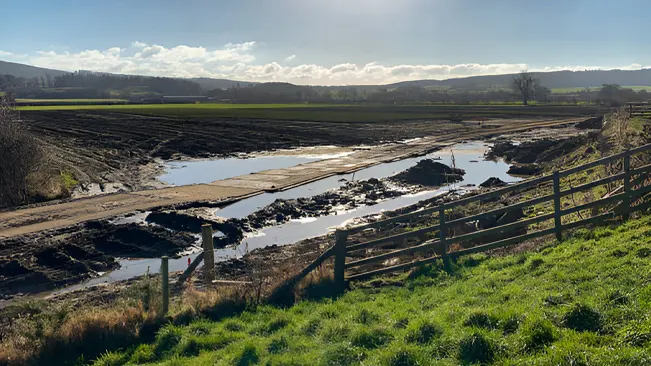
Extreme weather events, such as heavy rainfall, flash floods, and rapid snowmelt, exacerbate the effects of water erosion. For instance, in 2019, the Midwest suffered prolonged spring rainstorms, leading to severe soil erosion in agriculture. Fertile topsoil was washed away, impacting crop yields and increasing sedimentation in waterways.
Mitigating water erosion requires soil conservation techniques, such as planting cover crops, building terraces, and maintaining vegetation to absorb water and reduce runoff. Addressing this challenge is critical to protecting both agricultural productivity and the environment.
Common Forms of Water Erosion
Sheet Erosion
Sheet erosion is a subtle but destructive process where thin layers of topsoil are gradually removed across a wide area by evenly distributed, slow-moving water. Unlike more dramatic forms of erosion, sheet erosion often goes unnoticed because the soil loss is uniform and occurs slowly over time. It commonly affects gently sloping lands where water runoff spreads out rather than concentrating in channels.
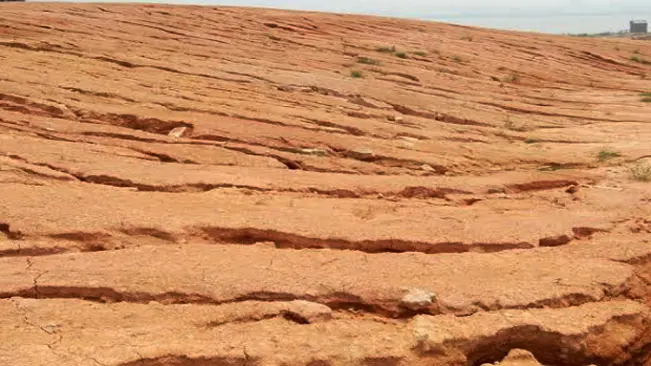
Although gradual, the long-term effects of sheet erosion are significant. The consistent removal of fertile topsoil depletes essential nutrients, reducing soil fertility and hindering agricultural productivity. Without this vital layer, plants struggle to grow, and the land becomes less suitable for farming. Recognizing and addressing sheet erosion is essential for the prevention of soil erosion, ensuring sustainable land use and maintaining soil health.
Rill Erosion
Rill erosion happens when surface water flow concentrates in small, shallow channels or furrows on a slope. These rills form when water begins to cut into the soil, creating visible grooves or depressions. While initially small, these channels can deepen and widen over time as water continues to flow, intensifying the erosion process.
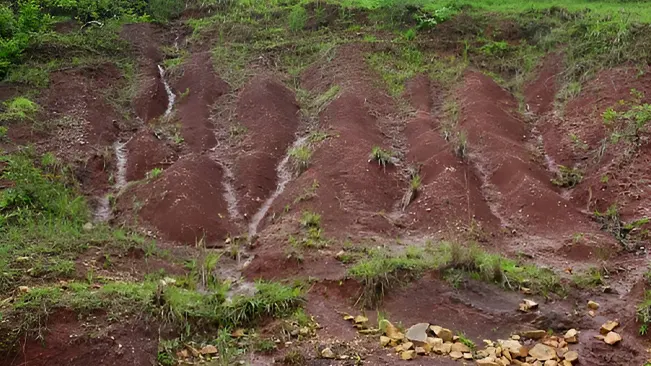
If left unmanaged, rill erosion can escalate into larger gullies, significantly degrading the land and impacting its stability. This type of erosion poses a particular threat to agriculture, as it removes fertile topsoil and reduces the land’s productivity. Addressing rill erosion requires proactive measures, such as contour plowing, planting vegetation to stabilize the soil, and implementing other soil conservation techniques to prevent further damage.
Gully Erosion
Gully erosion occurs when rill erosion advances, forming larger, deeper, and more pronounced channels called gullies. These gullies cut deeply into the ground, altering natural drainage patterns and causing significant damage to the landscape. They can be several feet wide and deep, making them highly destructive to soil stability, vegetation, and nearby structures.
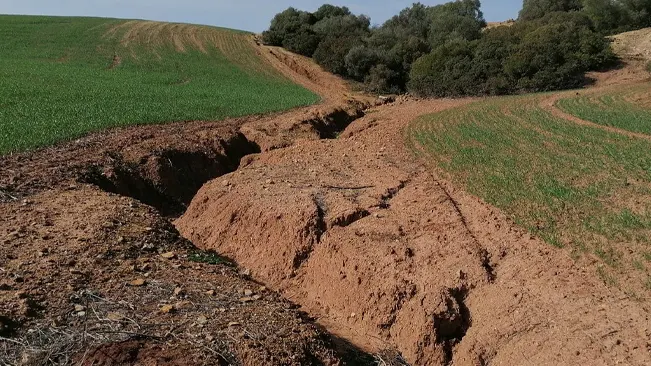
Gullies typically form rapidly in areas with intense water flow, especially on sloping or poorly managed land. Once established, they are difficult to reclaim and require extensive measures to repair. Addressing gully erosion often involves a combination of soil conservation techniques, such as replanting vegetation, building check dams, and contouring the land to manage water flow. Proactively managing soil can prevent gullies from forming and protect the land from severe degradation.
Streambank Erosion
Streambank erosion occurs along river and stream edges where flowing water gradually weakens and removes soil from the banks. This process often results in a significant loss of land as unstable banks collapse into the water, threatening nearby ecosystems and infrastructure.
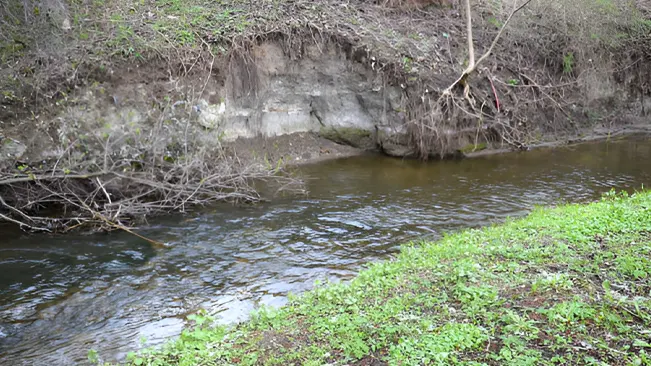
Factors such as increased runoff and human activities like dam construction or channelization exacerbate streambank erosion by altering water flow and increasing sediment levels in waterways. Over time, this erosion can widen and deepen rivers or streams, negatively impacting water quality and aquatic habitats. In addition to environmental effects, streambank erosion can cause property damage, especially in agricultural or residential areas. To address this issue, strategies like planting vegetation for stabilization, managing runoff, and restoring natural flow patterns are critical for preventing further soil loss and protecting the landscape.
Coastal Erosion
Coastal erosion occurs along shorelines where waves, tides, and currents gradually wear away the land. This process leads to the loss of coastal land, causing beaches, cliffs, and other coastal features to retreat over time. Coastal erosion poses risks to habitats, property, and infrastructure in affected areas.
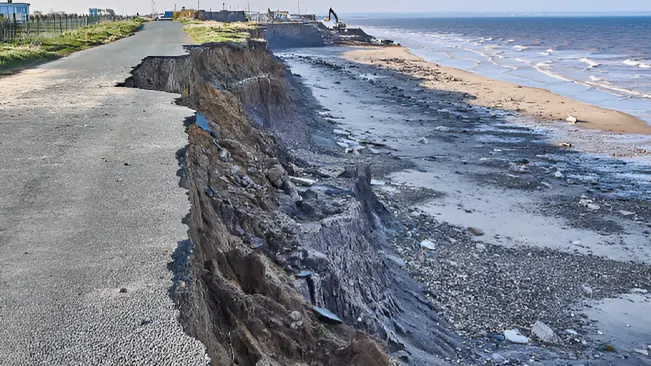
Human activities, such as construction near the shore, often worsen coastal erosion by disrupting natural sediment movement and increasing erosion rates. The ecological impacts can be severe, as the loss of land affects coastal ecosystems and reduces biodiversity. Addressing coastal erosion requires strategies like planting vegetation to stabilize the shore, using breakwaters to manage wave energy, and implementing sustainable coastal development practices to protect these vulnerable areas.
Effects of Water Erosion
The effects of water erosion depend on the extent and depth of topsoil loss. When topsoil is eroded, the remaining soil’s ability to retain nutrients and moisture diminishes, significantly hindering crop growth and reducing yields. In severe cases, heavily eroded land may become unsuitable for farming. Additionally, eroded soil loses its capacity to absorb water effectively, increasing the risk of flooding and forming large, stagnant water bodies. For example, persistent flooding during planting seasons can delay or completely prevent the sowing of new crops, further impacting agricultural productivity.
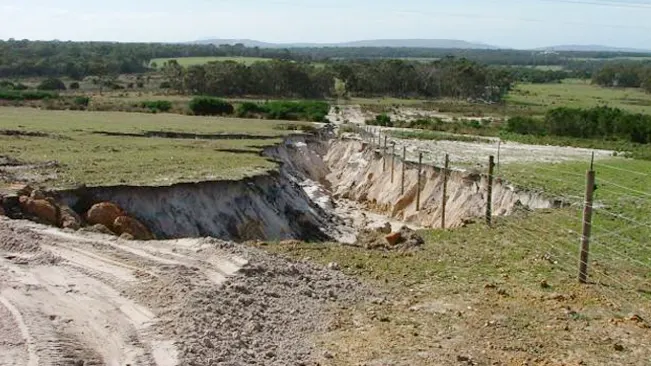
Beyond its agricultural impacts, water erosion contributes to environmental problems. For instance, the intense flooding in the Midwest in 2019 led to significant agricultural runoff entering waterways. This runoff, rich in fertilizers and chemicals, caused a massive “dead zone” in the Gulf of Mexico, where low oxygen levels made it impossible for marine life to thrive. Excessive nutrient runoff can also lead to harmful algal blooms, which deplete oxygen in water, endanger aquatic ecosystems, and pose risks to public health.
A notable example occurred in 2014, when a severe algal bloom in Lake Erie contaminated the water supply in Toledo, Ohio. Over 500,000 residents were advised to avoid using tap water due to unsafe toxin levels. These events highlight the broader consequences of water erosion, emphasizing the need for effective soil conservation techniques to protect both agricultural productivity and environmental health.
What is Wind Erosion?
Wind erosion occurs when strong winds blow over loose, dry, and unprotected soil, lifting and transporting soil particles through the air. This process removes the fertile topsoil that is essential for plant growth, resulting in land degradation and reduced soil fertility. Areas with minimal vegetation or poor land management are especially prone to wind erosion, as there are fewer natural barriers to anchor the soil.
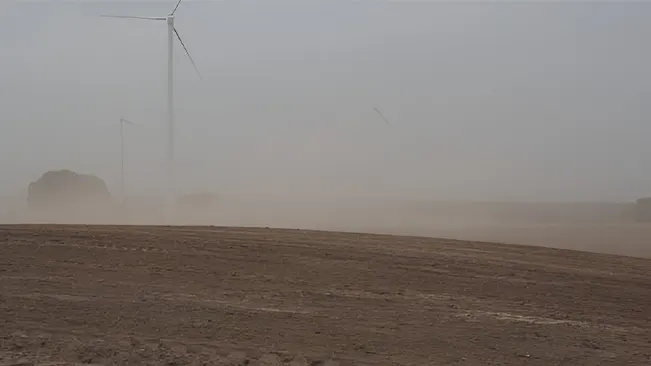
The effects of wind erosion extend beyond the land. It can create dust storms that reduce air quality and carry soil particles over long distances, impacting ecosystems and human health. For agriculture, this erosion diminishes productivity by depleting nutrients in the soil and damaging crops. In severe cases, wind erosion can lead to desertification or the formation of features like sand dunes, drastically altering the landscape. Implementing soil conservation techniques, such as planting windbreaks or maintaining ground cover, is essential to combat this destructive process.
Effects of Wind Erosion
Soil Degradation
Soil degradation is a significant consequence of wind erosion, as it removes the nutrient-rich topsoil that is vital for plant growth. This top layer contains organic matter and nutrients essential for retaining moisture and supporting agricultural productivity. When the topsoil is lost, the remaining soil becomes less fertile and less capable of sustaining crops.
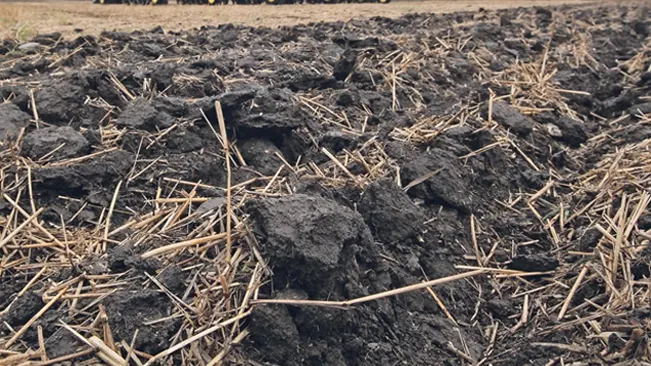
Farmers facing soil degradation often experience reduced crop yields and are forced to rely on additional fertilizers and soil amendments to replenish lost nutrients. While these measures may provide short-term solutions, continuous degradation leads to long-term declines in agricultural productivity. Over time, addressing degraded soil requires costly investments in soil conservation techniques and restoration efforts to rebuild fertility and ensure sustainable land use.
Dust Storms
Wind erosion can lead to the formation of large dust storms, where fine soil particles are lifted into the atmosphere and carried over long distances. These storms pose serious risks to air quality, often contributing to respiratory issues such as asthma, bronchitis, and other health problems for people in affected regions.

Dust storms also reduce visibility, creating hazardous driving conditions that increase the likelihood of accidents. Beyond human health and safety, the environmental effects are significant. Dust settling on crops can block sunlight, hindering photosynthesis and weakening plant health, which further impacts agriculture. Addressing the causes of wind erosion is essential to mitigating the occurrence of dust storms and their wide-ranging effects on health, safety, and the environment.
Desertification
In extreme cases, wind erosion plays a significant role in desertification, a process where once-fertile land becomes dry, barren, and unproductive. Desertification transforms productive landscapes into arid deserts, severely reducing their agricultural potential and disrupting local ecosystems.
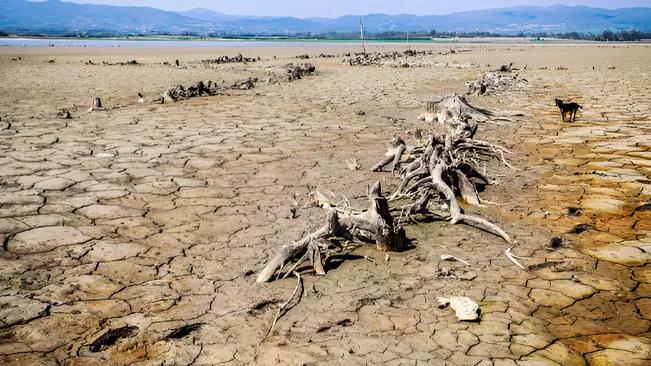
This phenomenon is often worsened by poor land management practices, such as overgrazing and deforestation, which strip the land of vegetation that stabilizes the soil and prevents erosion. As desertification progresses, it leads to the loss of arable land, forcing communities to abandon their homes, impacting food security, and straining local economies. Combatting desertification requires sustainable land management and effective soil conservation techniques to preserve soil health and prevent further degradation.
Damage to Vegetation
Wind erosion can cause significant damage to vegetation by physically uprooting plants and exposing their roots. This disruption weakens the soil’s stability, making it even more vulnerable to further erosion. The loss of vegetation not only leaves the soil unprotected but also interrupts the natural processes that maintain soil health and fertility.
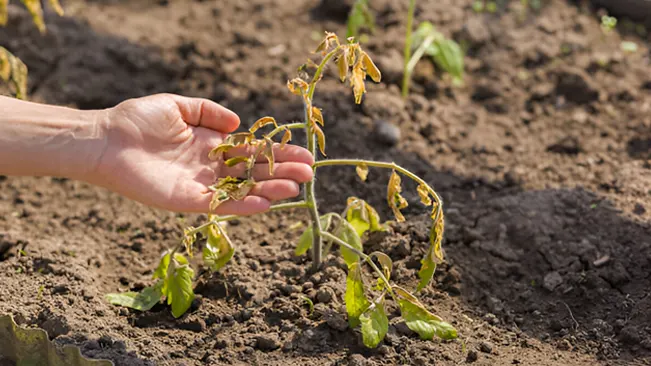
Vegetation acts as a critical barrier against both wind and water erosion, anchoring the soil and reducing its susceptibility to displacement. When vegetation is removed, either by erosion or poor land management practices, the cycle of soil degradation intensifies. Without adequate ground cover, the land becomes increasingly barren, making it difficult to restore its productivity. Addressing this issue requires strategies like replanting vegetation and adopting sustainable practices to break this cycle and stabilize the soil.
Sedimentation in Waterways
Soil particles displaced by wind erosion often settle into rivers, streams, and other water bodies, leading to increased sedimentation. This sediment clouds the water, reduces light penetration, and smothers aquatic habitats, disrupting ecosystems and harming fish and other aquatic organisms.
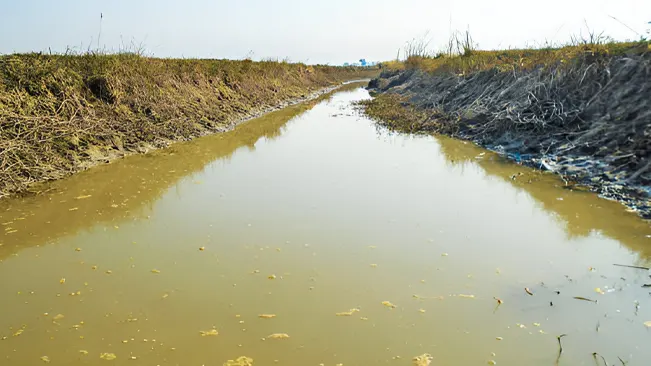
Elevated sediment levels can also degrade water quality and complicate water treatment processes, making it more expensive and less efficient to produce clean water. Over time, the accumulation of sedimentary deposits can alter the natural flow of waterways, further impacting the health and stability of aquatic ecosystems. Addressing sedimentation caused by soil erosion is crucial to protecting water resources and maintaining balanced ecosystems.
Infrastructure Damage
Wind erosion can cause significant damage to infrastructure by eroding the soil around the foundations of roads, buildings, and other structures. As the supporting soil is displaced, the stability of these structures is compromised, potentially leading to costly repairs, maintenance, or even structural failures.

In severe cases, the loss of soil can undermine the stability of roadways and embankments, creating safety hazards for transportation and increasing repair expenses. The impact of soil erosion on infrastructure highlights the importance of implementing soil conservation techniques to stabilize the land and protect critical structures from long-term damage.
Impacts of Erosion
Erosion has wide-ranging impacts on both the environment and human activities. The removal of topsoil reduces soil fertility, hindering agricultural productivity and forcing farmers to rely on fertilizers and soil amendments to maintain yields. This loss of fertile soil leads to lower crop production, economic losses, and long-term challenges for sustainable farming.
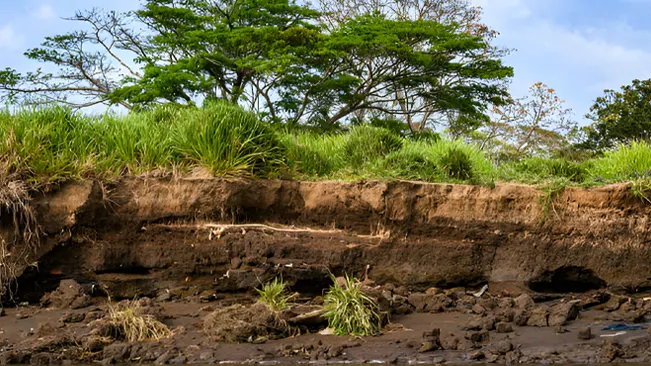
Erosion also contributes to sedimentation in waterways, degrading water quality, disrupting aquatic ecosystems, and smothering habitats. This sedimentation alters water flow and negatively impacts aquatic life, further straining the environment.
In addition to its agricultural and ecological effects, erosion damages infrastructure by destabilizing soil around roads, bridges, and buildings. This can lead to costly repairs, safety hazards, and increased vulnerability to flooding as erosion alters drainage patterns and amplifies runoff. The interconnected impacts of soil erosion, including environmental degradation, economic strain, and infrastructure damage, highlight the urgent need for effective soil conservation techniques to mitigate these challenges.
Conclusion
Soil erosion poses serious challenges to both the environment and human activities. By depleting fertile topsoil, it reduces agricultural productivity and disrupts ecosystems. The resulting sedimentation in waterways further harms water quality, aquatic habitats, and natural water flow. Additionally, erosion contributes to infrastructure damage, creating economic strain through costly repairs and safety risks.
To combat these impacts, implementing soil conservation techniques and sustainable land management practices is essential. Addressing soil erosion not only protects vital soil resources but also ensures a healthier environment, supports resilient agriculture, and safeguards infrastructure for future generations.
FAQs
- What is soil erosion?
Soil erosion is the process where soil is removed from the Earth’s surface by natural forces such as wind and water, or through human activities. This can lead to the loss of fertile topsoil and affect land productivity. - What causes soil erosion?
Soil erosion is caused by a variety of factors, including heavy rainfall, strong winds, poor land management practices, deforestation, and construction activities. These factors can expose soil to erosion and disrupt its stability. - How does soil erosion impact agriculture?
Soil erosion reduces soil fertility by stripping away the nutrient-rich topsoil, which can lead to decreased crop yields and require additional fertilizers. This impacts agricultural productivity and increases farming costs. - What are the environmental effects of soil erosion?
Erosion can lead to sedimentation in rivers and streams, degrading water quality and harming aquatic habitats. It can also contribute to the loss of natural habitats and biodiversity, and exacerbate flooding. - How can soil erosion be prevented?
Soil erosion can be managed through practices such as planting cover crops, creating windbreaks, using erosion control mats, and implementing sustainable land management techniques. Proper vegetation and soil conservation practices help protect soil from erosion. - What are some common forms of soil erosion?
Common forms include sheet erosion (thin layers of soil being removed evenly), rill erosion (small channels forming on slopes), gully erosion (larger, deeper channels), and streambank erosion (erosion along riverbanks). - How can I tell if soil erosion is affecting my land?
Signs of soil erosion include visible loss of topsoil, the formation of channels or gullies, increased sediment in nearby water bodies, and reduced plant growth or productivity. Monitoring these indicators can help assess the extent of erosion. - What role does vegetation play in preventing soil erosion?
Vegetation helps stabilize the soil with its root system, reduces the impact of raindrops, and slows down water runoff, all of which help prevent soil erosion. Plants act as a natural barrier to protect soil from erosion. - Can erosion be reversed?
While it can be challenging, erosion can be mitigated and reversed through restoration practices such as replanting vegetation, stabilizing slopes, and applying soil conservation techniques. Effective management can help restore soil health and prevent further erosion. - How does climate change affect soil erosion?
Climate change can increase the frequency and intensity of extreme weather events like heavy rainfall and strong winds, which can exacerbate soil erosion. Changes in temperature and precipitation patterns can also affect soil stability and vegetation.

Joel Cunningham
Forestry AuthorI'm Joel Cunningham, an expert in pruning and weed management with over a decade of experience. My skills are rooted in formal training and extensive practice, focusing on advanced pruning techniques and efficient weed control. I'm known for my quality work, precision, and deep understanding of plant health and soil dynamics. My contributions extend to educational initiatives where I share sustainable practices and advice, establishing myself as a reliable and authoritative figure in the gardening community.


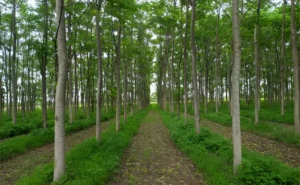
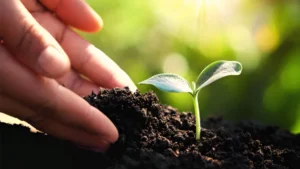
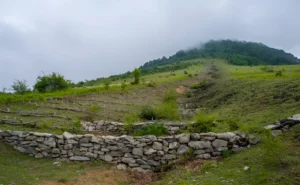


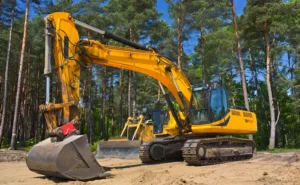
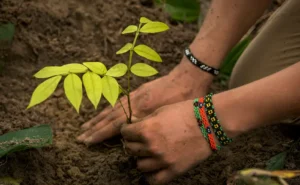

Leave your comment